Alisa Grishman has experienced clear pathways and inclusive venues while navigating Pittsburgh in her wheelchair. But she’s also encountered sidewalks without curb cuts and with obstructions.
Though Pittsburgh has become more accessible to people with disabilities since the Americans with Disabilities Act [ADA] passed in 1990, parts of the city have presented challenges to Grishman’s mobility. The act requires existing buildings to remove accessibility barriers when easily done and minimally expensive, but it’s only enforceable through citizen complaints and lawsuits filed with the U.S. Department of Justice.
Grishman, founder of accessibility advocacy group Access Mob Pittsburgh, has partnered with PublicSource to document locations and features in the city that she has found to be accessible and inaccessible to people with disabilities.
From PPG Paints Arena to the city’s light rail system, here’s Grishman’s list in her own words:
Wins
Grishman’s polling location near the intersection of Forbes Avenue and Stevenson Street
“Initially the ‘accessible’ entrance to my polling location consisted of a pair of folding ramps that didn’t line up safely and I couldn’t actually enter the building. The gracious employees of the firehouse helped me out as best as they could to go in a side entrance, and the next year when I showed up to vote they had converted their two-step entrance into a beautiful ramp. Hurrah!” —Grishman
Under the ADA, public entities must make voting facilities accessible to people with disabilities, according to a 2016 ADA checklist for polling places from the U.S. Department of Justice. Polling sites must have an accessible route both to the entrance of the location and to the voting area inside the facility, among other features.
“Simply put, voting in person at a local polling place is the quintessential American voting experience,” the 2016 report states. “People with disabilities must have the opportunity to be full participants in an integrated civic event.”
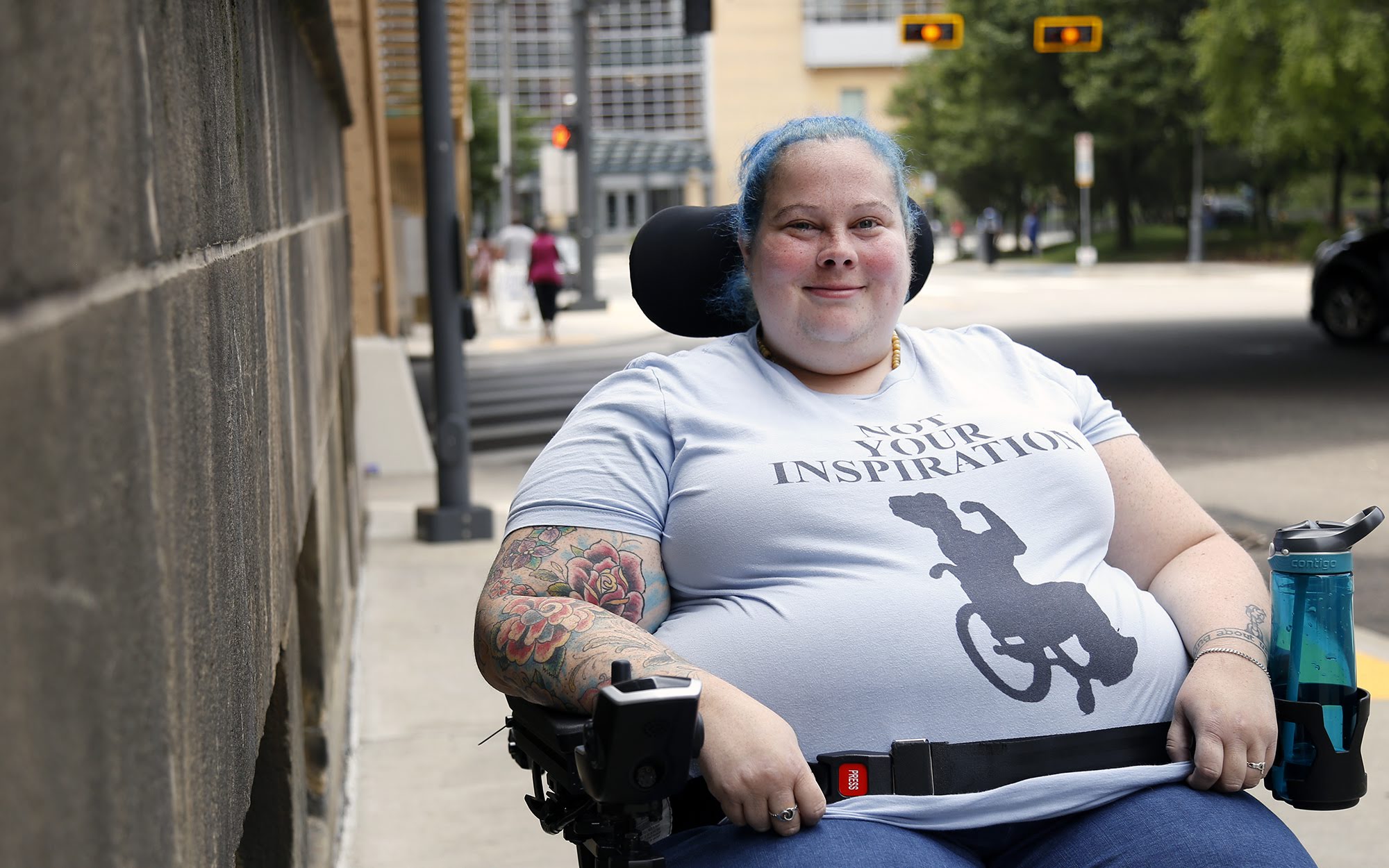
“I’d give the city six out of 10, pretty good but not perfect,” says Alisa Grishman, founder of Access Mob Pittsburgh, on the accessibility within Pittsburgh. Grishman serves as a member of Mayor Bill Peduto’s advisory group for Complete Streets. (Photo by Ryan Loew/PublicSource)
“The Carnegie Museums have always been very physically accessible (although I do wish all of its locations had electric scooters available to rent), but two things really stick out to me. The first is their participation in a statewide program that allows people with SNAP (also known as food stamps) to access certain museums for $3 or less. The second was their 2019 exhibit called Dis+Ability, which highlighted assistive technologies in a sensitive and beautiful way, including dance workshops that were accessible to people of all abilities. It was awesome!” —Grishman
All four Carnegie Museums have accessible entrances and bathrooms, as well as assistive listening devices, elevators and closed captioning to accompany videos, said Betsy Momich, director of corporate communications for Carnegie Museums of Pittsburgh, in a statement.
Large-print materials and sighted guides are additional features offered at the museums, and wheelchairs are available upon request. The museums can also provide visitors who give advanced notice with interpreters who can provide translations in American Sign Language.
The Carnegie Museum of Natural History continues to partner with local hospitals, community centers and special-needs schools for its Museum on the Move program, Momich said. The program, which collaborated with 15 partners last year to reach more than 8,000 participants, brings museum programming to children of various abilities.
The art museum has also broadened its “In the Moment” tour model — first designed for individuals with dementia and Alzheimer’s — to reach more visitors who benefit from discussion and socialization regarding artwork, Momich said. Tactile reproductions of artwork, verbal description tours and raised-line prints are available at the museum, and descriptions in Braille and in large print are offered.
Sensory backpacks and electric scooters are provided to visitors at the Carnegie Science Center, Momich said. The center has also hosted several sensory-sensitive events, including a viewing of the “Polar Express” film.

The Carnegie Museums of Art and Natural History. (Photo by Jay Manning/PublicSource)
“The Warhol Museum is gloriously accessible, especially in their efforts to bring visual artwork alive to people who are blind or low vision. They have a guided audio tour with beacons so they know exactly where you are and can describe the painting you are in front of, and each floor has several tactile versions of his art that, combined with audio description, you can follow with your hands to truly experience his art.” —Grishman
The Warhol, also a Carnegie Museum, has co-hosted two Silent Disco events with the Autism Connection of Pennsylvania and The Pittsburgh Center for Autistic Advocacy and has offered two workshops that were sensory-sensitive, Momich said.
For guests who are blind or who have low vision, the museum has added touchable, three-dimensional reproductions of some of Warhol’s work. A free mobile app also provides visual descriptions to visitors with hearing impairments and discusses the tactile elements of pieces in the museum.
The museum also provides workshops at the Watson Institute and Wesley Spectrum Schools for students who have behavioral disabilities and autism spectrum disorders, Momich said.

The PPG Paints Arena. (Photo by Jay Manning/PublicSource)
“I have had nothing but positive experiences going to events at PPG Paints Arena. They have staff members outside the front gate looking for visibly disabled people (or you can approach them and identify as needing assistance) and they take you in a side entrance to a special elevator. Once inside, I’ve found the staff well-trained at assisting disabled people and generally helpful for getting seating set up and the like.” —Grishman
PPG Paints Arena is “very proud” of its commitment to community members with disabilities, both through the arena’s accessibility and the services and employment opportunities it offers, the arena said in the statement
The staff at PPG Paints Arena also provides accessible tickets and seating, assistive listening devices and complimentary wheelchair escorts, among other services, to visitors with disabilities.
“We are constantly trying to stay ahead of the curve [to] keep our facility safe, accessible and welcoming to all of our guests,” the statement reads.
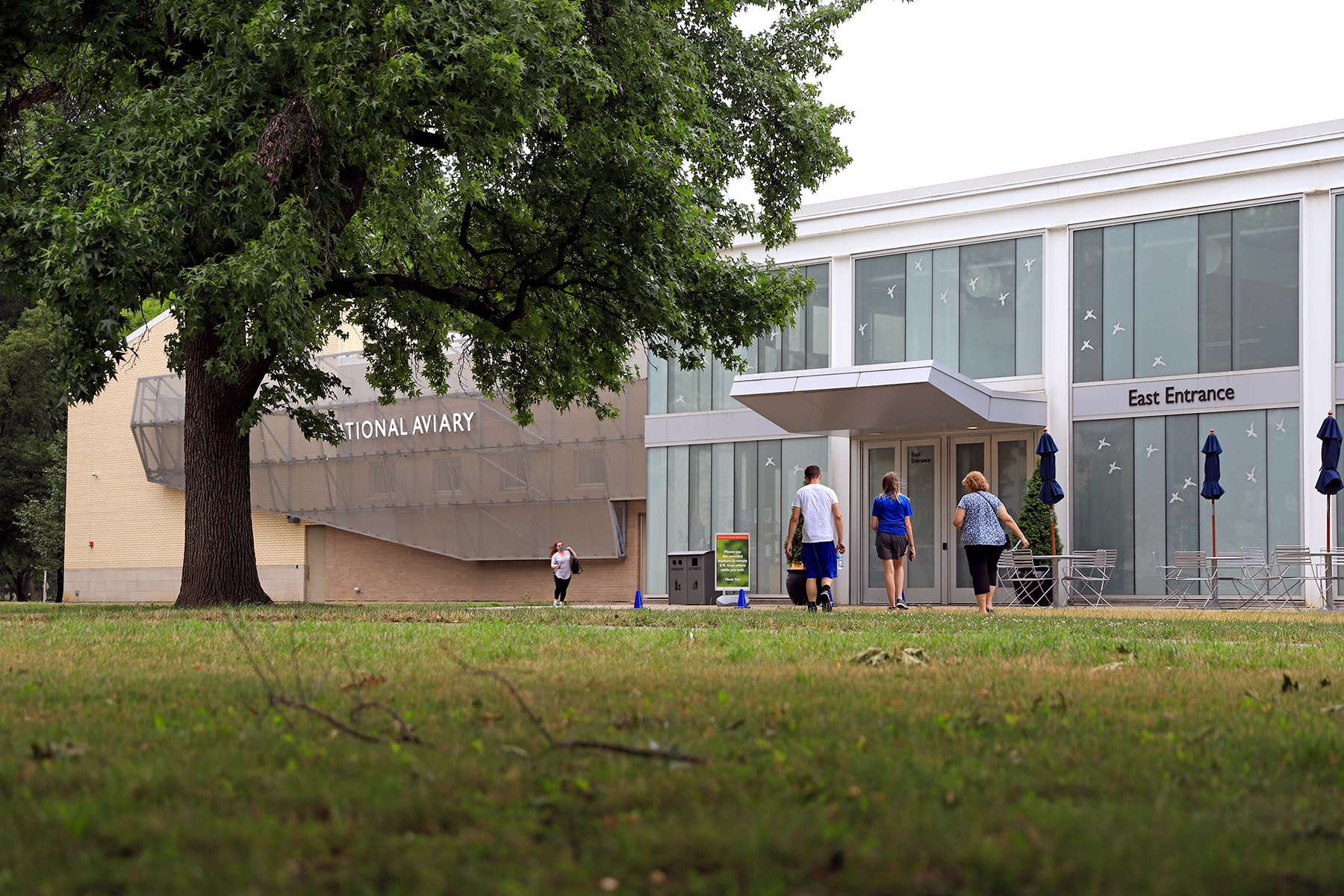
The National Aviary. (Photo by Jay Manning/PublicSource)
“The last big date I had with my boyfriend before the COVID lockdown was to the National Aviary and it was fantastic. From a physical accessibility standpoint, they are outstanding — even the bathrooms were easy to maneuver. We’ve also been there for events and they did an excellent job of keeping pathways clear and using accessible cable covers in walkways when needed.” —Grishman
The National Aviary is accessible to wheelchairs and strollers and features high-contrast signage, including in Braille, said Molly Toth, communications specialist for the aviary, in a statement.
Large-print maps are also available upon request, and accessible parking and free wheelchairs for loan are offered on a first-come, first-served basis. Assistive listening devices and printed scripts are available during interactive live bird shows.
The aviary provides a sensory guide on its website to help guests learn what they may see, hear and smell during their visit, Toth said. Staff members also undergo sensory accessibility training and can provide visitors with sensory backpacks and noise-canceling headphones.
Areas for improvement
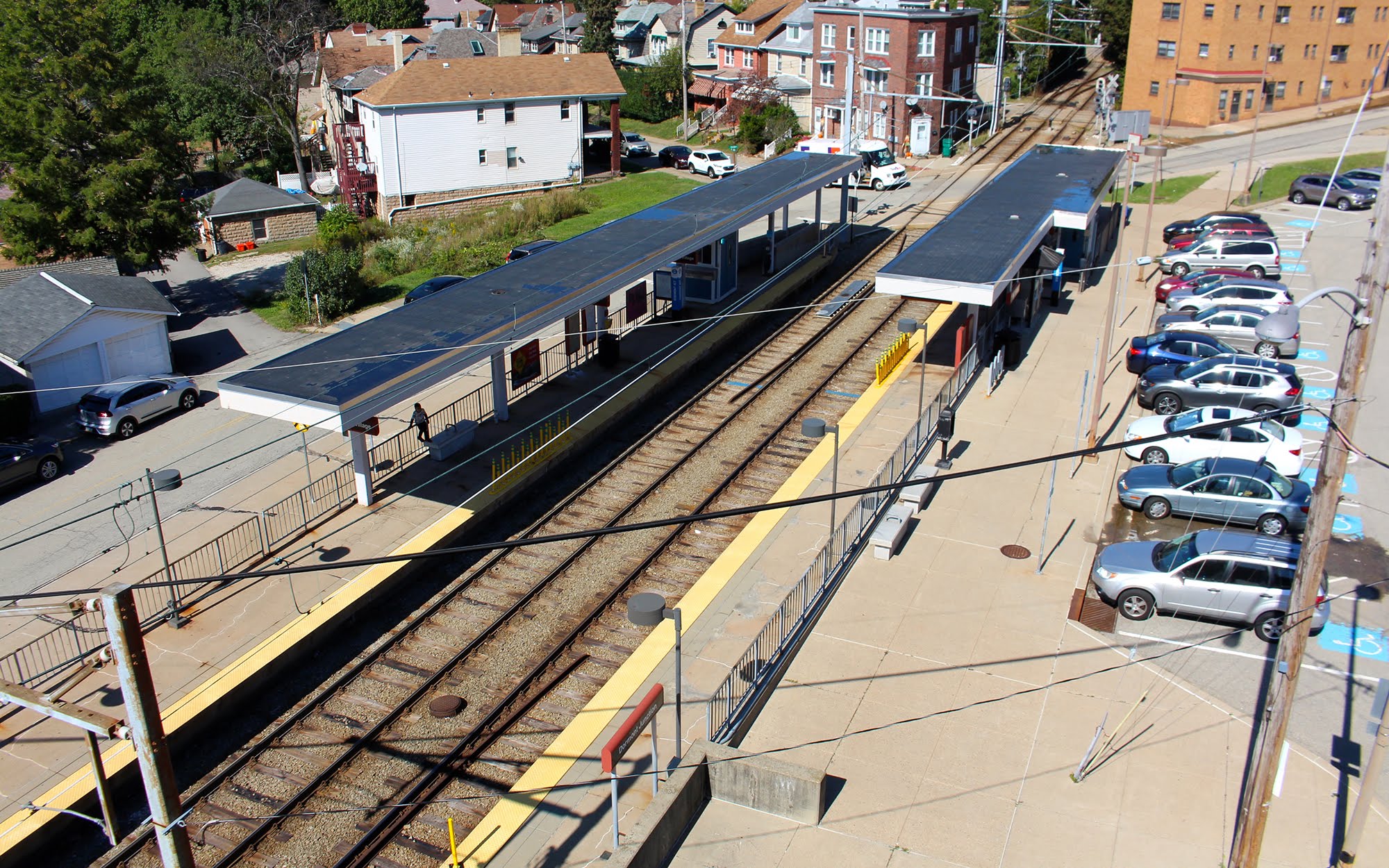
The Port Authority of Allegheny County's Dormont Junction station, which has been criticized for compliance issues with the Americans with Disabilities Act. (Photo by Jay Manning/PublicSource)
“As a native Manhattanite, I already look at the T with some disdain, but from an accessibility standpoint, it’s a nightmare. Some stops are high-level ones, meaning that there’s a platform at door level and you can just roll on out at your stop. Other stations are street-level and you have to be able to climb up and down a steep set of steps, which is difficult for people with certain mobility impairments and strollers and shopping carts and impossible for wheelchair users.” —Grishman
Of the light rail system’s about 52 stops and stations, about 25 are ADA-compliant and 25 are not, said Adam Brandolph, spokesperson for the Port Authority of Allegheny County, in an interview. The system’s low-level stops are not ADA-compliant, as they require stairs at the front of the vehicle to reach the street safely.
The first route on the light rail system was completed in 1984, prior to the passage of the ADA. Many stops can’t be renovated to be ADA-accessible, and the only alternative would be to eliminate the stop entirely, Brandolph said.
When the authority seeks to make a major change to a stop, “the first thing we look at is, is [the stop] ADA-compliant, and if it’s not, how do we do that?” Brandolph said.
The authority is required to provide paratransit services for people who use mobility devices, and riders can call customer service or share ADA-related feedback on a comment form located on the authority’s website.
Though there are limitations to what the Port Authority can do to improve accessibility, the department understands that one inaccessible station is one too many, Brandolph said.
“In a perfect world, we would absolutely have every single stop, station, curb cut as accessible as absolutely possible and we are working to get there,” Brandolph said. “Accessibility is independence and public transit is accessibility.”
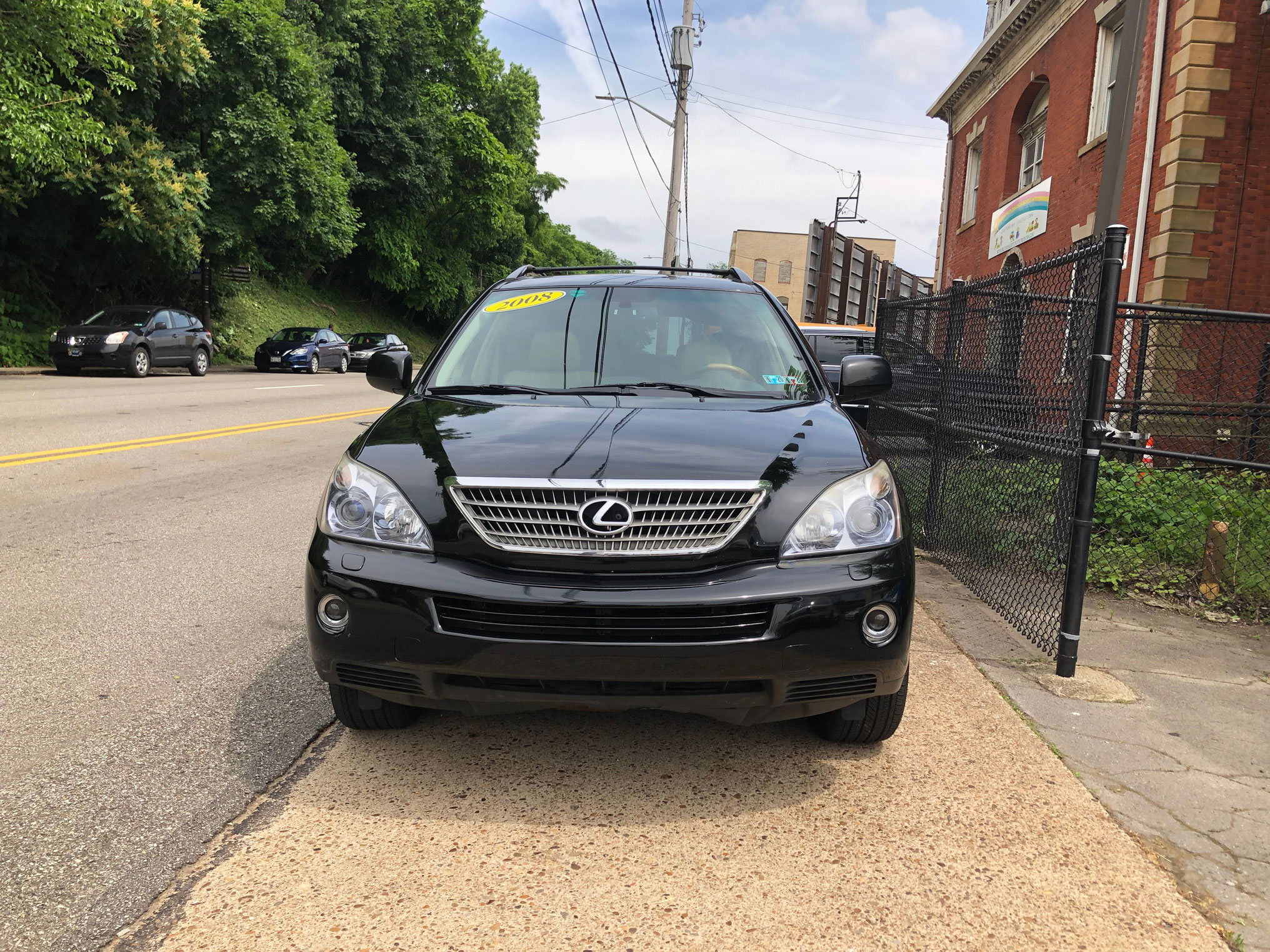
Accessibility advocate Alisa Grishman says multiple businesses on Fifth Avenue in the Uptown area park vehicles on the sidewalk. (Courtesy photo)
“There is a set of three businesses in a row on Fifth Avenue that almost constantly have cars parked on the sidewalk. I’ve reported them all numerous times. The owner of a car lot uses the sidewalk for parking as well, including putting out for-sale vehicles on display.” —Grishman
Parking on sidewalks is unsafe, illegal and inequitable, said Karina Ricks, director of the Department of Mobility and Infrastructure [DOMI], in a statement. Pittsburghers must break this habit, she said.
“It is sad when motorists value the physical protection of their personal property (their car) over the protection and preservation of a real person,” Ricks said. “Those are not the values Pittsburghers espouse. We need to live up to our values.”
Though the rules against parking on sidewalks are clear, education and enforcement are needed to change people’s behavior, DOMI Chief Engineer Eric Setzler said in a statement.
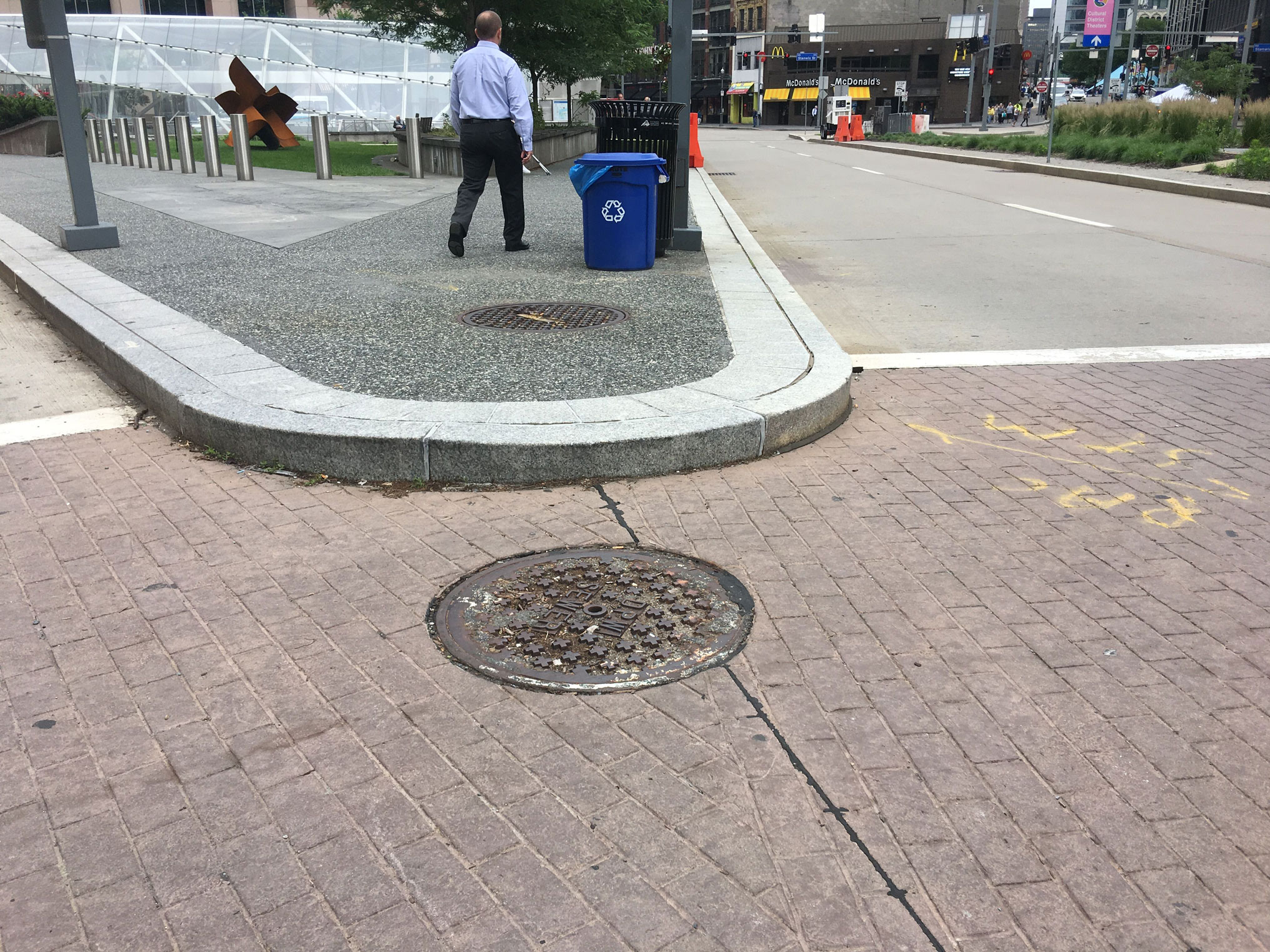
The crosswalk where Penn Avenue and Liberty Avenue merge westbound Downtown. (Courtesy photo)
Crosswalk where Penn and Liberty avenues merge westbound Downtown
“I cannot tell you the frustration of getting off the T to go to one of the many events held down by The Point and walking to this intersection only to find that there isn’t a curb cut into the giant crosswalk and having to double back a block to get to a different intersection. It’s so frustrating and I’ve reported it numerous time to the city but it’s been years and nothing has happened.” —Grishman
Setzler said he wasn’t sure whether there’s a reason that a ramp is not on the curb, but he will ask the department’s engineers to evaluate the condition.
Crosswalk at Liberty and 6th avenues

Crosswalk at Liberty and 6th avenues. (Courtesy photo)
“When I’ve reported this crosswalk that leads to a piece of sidewalk with no curb cut, I was told that I should go to a nearby corner, which requires me to walk along the street into oncoming moving traffic that’s making turns at that intersection. To say that would be unsafe is a gross understatement and I’m tired of my life not being as important to the city as their laziness.” —Grishman
DOMI is aware that the crosswalk is lacking a ramp, Setzler said. The department evaluated the location last year for the addition of a ramp, but found the sidewalk is also the roof of a building underneath.
“Removing the sidewalk would expose the basement,” Setzler said. “Unfortunately this location will not be an easy fix.”
When modifications or significant investments are made to a street, the city or any responsible actor must ensure the street is renovated to meet current ADA standards, Ricks said. Both Grishman’s examples involving crosswalks are areas that haven’t seen large investment in decades, she said.
"They reflect the policy of their day but not of today,” Ricks said.
Pittsburgh has programs to update city features to meet modern accessibility standards, but its extensive amount of old infrastructure has created a financial need to prioritize sites to address through the 311 Response Center, she said.
Sidewalk leading onto the northbound side of the Birmingham Bridge
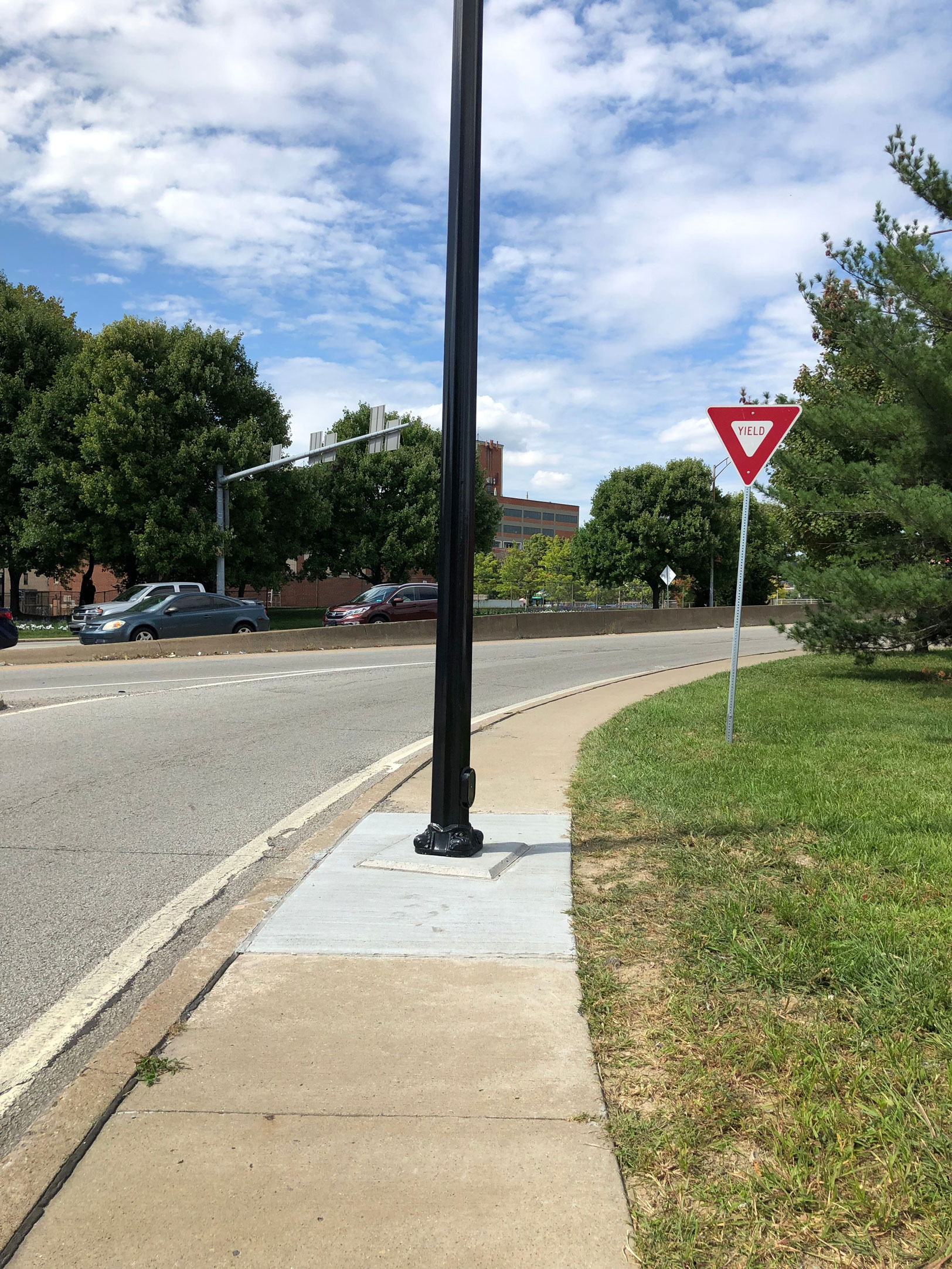
Sidewalk leading onto the northbound side of the Birmingham Bridge. (Courtesy photo)
“There’s nothing like having to walk on the on-ramp to a busy bridge because some jagoff decided it would be a great idea to put a streetlight in the middle of the sidewalk. I really enjoy walking across the Birmingham Bridge to get to the South Side but when PennDOT came in and installed that lamp it suddenly became completely unsafe to do so.” —Grishman
The Pennsylvania Department of Transportation [PennDOT]’s East Carson Street project will fix the streetlight, Setzler said. PennDOT is renovating the sidewalk and curb to create a safer way for pedestrians to cross and to narrow the intersection.
The streetlight — which the city installed last year as part of its East Carson Street project — was placed to accommodate the planned location of the sidewalk and curb.
“Unfortunately there was a delay between the completion of our project and the start of the PennDOT project, so this inaccessible condition has resulted in the interim,” Setzler said.
DOMI has already informed PennDOT that the streetlight is noncompliant and must be corrected, Ricks said.
The ADA is not only for people with disabilities, Ricks said, but it is vital for an inclusive city that enables its residents to meet their needs and thrive. Universal access is not easily achieved, but the city is committed to meeting that standard, she said.
“We just need to remain constantly vigilant about it,” Ricks said.
Recognizing inaccessibility
The Pittsburgh community must work to address inaccessibility, as anyone may experience a disability in their lifetime, Grishman said.
Pittsburgh has made some strides in improving accessibility for people with disabilities, but it has more work to do. To achieve universal accessibility, the Pittsburgh community — including those who are currently abled — must actively recognize inaccessibility and seek to address it.
Residents who encounter city sidewalks without a curb cut or other inaccessible features can call the city’s 311 Response Center. And before parking your car on a sidewalk, consider that a person with disabilities may be unable to navigate the area.
Pittsburghers still face barriers to mobility and access three decades after the passage of the ADA. But with residents who are mindful of the role they can play in furthering accessibility, the city can get closer to becoming a place that’s inclusive of people of all abilities.
Alisa Grishman is an advocate for accessibility and the founder of Access Mob Pittsburgh. To send her a message, email firstperson@publicsource.org.
Emma Folts is an editorial intern for PublicSource. She can be reached at emma@publicsource.org.